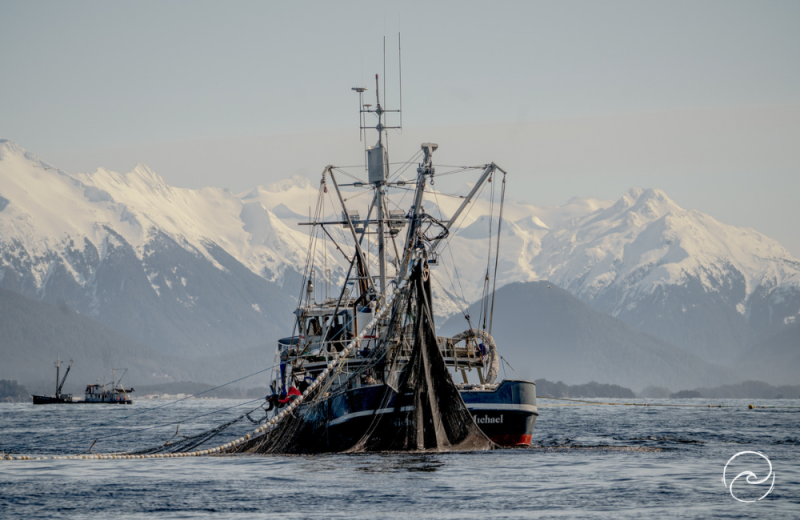This late April and May more than 316,000 tons of herring will return to the shores of Bristol Bay’s Togiak District to spawn, but unlike the past, there won’t be anyone there to harvest them.
“There’s no market here in Togiak,” says Tim Sands, area management biologist with the Alaska Department of Fish and Game in Dillingham.
The fishery got off to a slow start in the mid-1970s and grew to more than 200 vessels in 1980. By the end of the decade, some 300 seine permits plied the waters and caught the entire GHL of around 25,000 tons in a single 20-minute opener. Ex-vessel prices climbed to more than $1,000 per ton in the heyday, but more recently they have ranged from $50 to $100 in reaction to dwindling demand in mainstay markets in Japan.
The ADF&G uses an exploitation rate of 20 percent of the total biomass to set Guideline Harvest Levels (GHLs) and this year the fleet would have been allowed a harvest of 57,419 short tons. Last year, the GHL had been set at a record 65,107 tons, but only a handful of vessels harvested about 15,000 tons.
As for management of the fishery, biologists will fly aerial surveys throughout the spawning cycle this year and keep tabs on biomass for the prosecution of commercial fisheries in the future.
“We definitely want to keep track of the biomass,” says Sands, who has been a manager of the fishery for 21 seasons. “We view this as a temporary thing. But I’m not saying that we’re ever going back to the glory days,” he says.
Sands reported air temperatures at 4 degrees on April 18, and speculated herring wouldn’t show until around the end of April.
“The ice is built back up over at Togiak,” he says.
Meanwhile, the Sitka Sound fishery got underway in April, and the preliminary harvest looks like it will come in at around 10,900 tons. The GHL had been set at 30,124 tons and the forecast called for average weights of 134 grams. Of the 48 limited entry permits, 30 vessels participated in this year’s fishery. Area management biologist Aaron Dupuis in Sitka reports that this year’s average roe content will come in at around 11 percent. Though fish ticket data hasn't been evaluated yet, the average ex-vessel prices are expected to mimic last year's $300 per ton.
“It ended up begin a pretty decent season, all things considered,” says Dupuis.
Finding fish between 120 and 140 grams, which makes them suitable for markets in Japan, proved a bit challenging, according to Dupuis.
“We had several openings where test sets looked great, with 140 gram fish and roe running at 13 percent,” says Dupuis, of testing for mature female fish and sampling for optimum size. “Then we’d go fishing and with 20 sets in the water, 15 had to be turned away because there would be 90-gram fish and roe recovery of 7.5 percent.”
As for the future of the fishery, the presence of young fish in this year’s season bodes for another strong showing of herring next year and beyond. Dupuis says that the biomass spotted from the air was huge, with one school measuring 2 nautical miles long, one half nautical mile wide and 10 to 30 fathoms deep.
“I think we have another big year class coming in,” says Dupuis.







